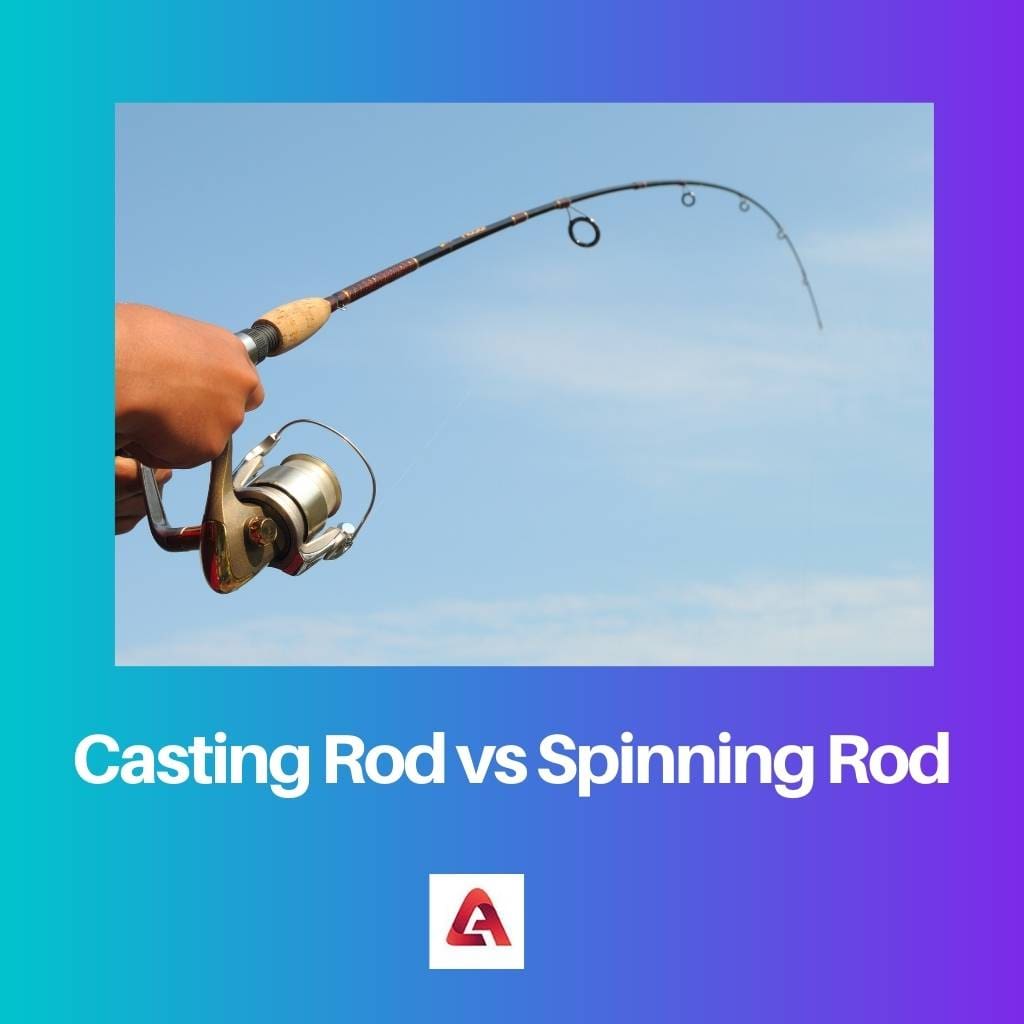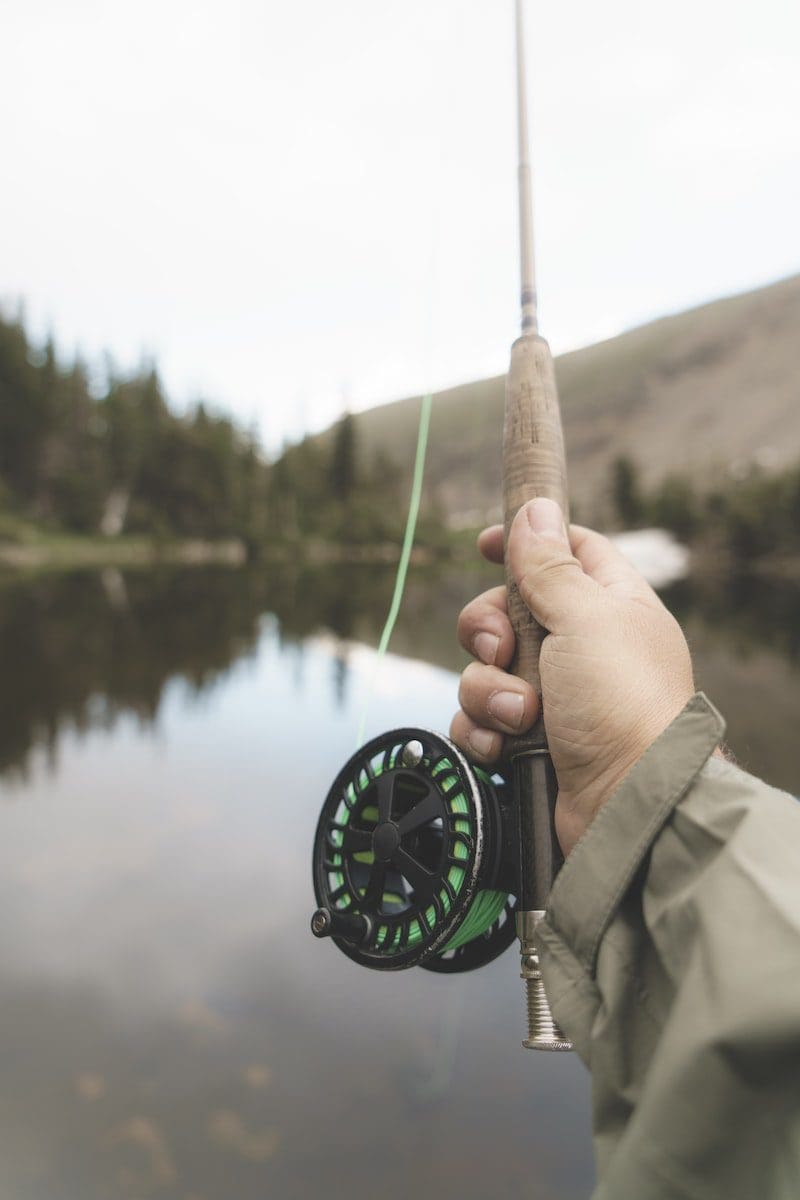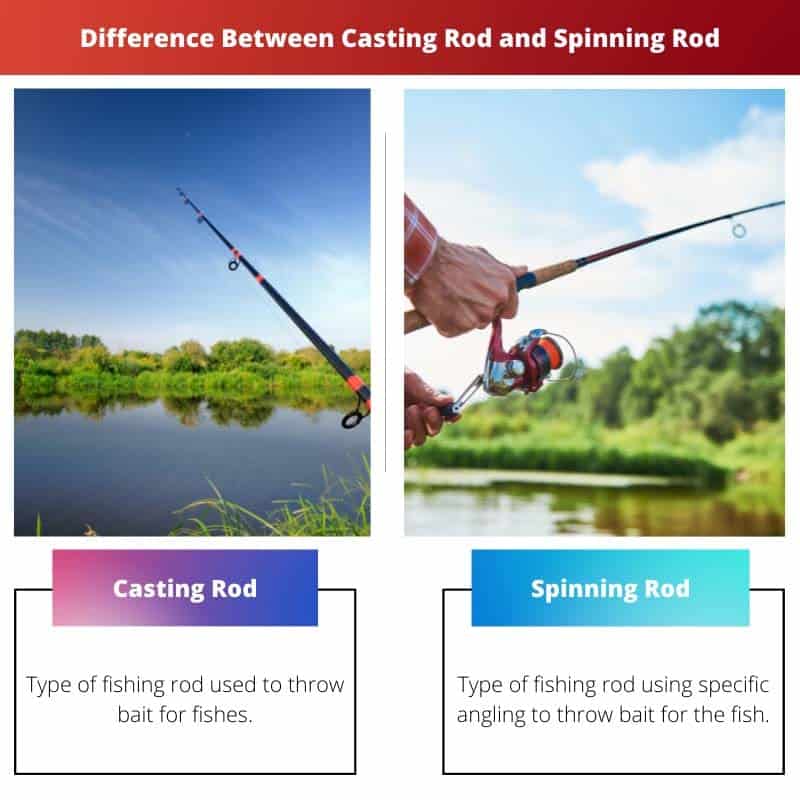A fishing rod is a device that is used in sport fishing. The essential components of a fishing rod consist of a long pole with guides that help hold the line in position. The bar is stored on a reel, which the angler spins to pick up and release when casting.
A hook holds the lure or baits at the loose end of the line, and the bobbers and sinkers help keep the bait at the correct water level. Some examples of appeal include live worms, insects, or artificial lures.
Key Takeaways
- A casting rod is used when an angler wants to fish with heavier lures, baits, and longer lines.
- A spinning rod is used when an angler wants to fish with lighter lures, baits, and shorter lines.
- Casting rods are designed for precision and distance while spinning rods are designed for versatility and ease of use.
Casting Rod vs Spinning Rod
Casting rods are heavier and have a straight handle for accurate casts with bait or lures. Spinning rods are lighter and have a curved handles for easier control of lighter lures and lines. Both have lengths, power, and action specifications to match the fish type and fishing technique.

A casting rod is a fishing rod to catch fish using bait or lures. It has casting reels, also known as bait caster, level wind, or conventional reels.
Casting is throwing the bait, or the lure using a fishing line into the water body to catch the fish, be it a lake, reservoir, or any other water body.
The spinning rod is the fishing rod used to catch fish using the angling technique. The rod uses an angling approach where bait or the lure is spinning to attract the fish to bait and credit.
Comparison Table
| Parameters of Comparison | Casting Rod | Spinning Rod |
|---|---|---|
| Meaning | Type of fishing rod used to throw bait for fish. | Type of fishing rod using specific angling to throw bait for the fish. |
| Reel type | It has a baitcasting reel that looks like a small winch is mounted on the top of the rod. | It has an under-slung spinning reel, an open face, and a revolving bail. |
| Reel seat and guides | Smaller in size when compared to a spinning rod. | Larger in size than that of a casting rod. |
| Performance | Lesser performance: Can adjust heavy baits/lures. | Better performance: Holds lightweight bait and live bait. |
| Usage | Used for fishing for beginners and heavy cover. They are used for technical applications such as sight fishing. | Used for severe fishing, still fishing, trolling, and live bait fishing for panfish, catfish, and walleye. |
| Learning experience | It is hard to learn. | It is easy to learn. |
What is Casting Rod?
A baitcasting rig has laser accuracy and winch-like power in cases of using popular fishing techniques. The popular fishing baits used in the case of casting rods are crankbaits and jigs.
The casting rod has precise targeting owing to its smooth operation and low-profile mounting. The process of the baitcasting reel allows anglers to achieve good accuracy and control at casting.
Casting rods have guide spacing which is well-tested and prevents the rubbing of lines on the rod’s blank. In the case of casting rods, the reels rest on the top of the rod while fishing.
When fighting a fish with a casting rod, the rod bends while the guides face upwards. This makes the force of the fish pushing the line down on the rod blank and the eyelets.
This helps prevent the eyelets of the rods from wearing off due to the force of the fish. Power fishing, trolling, and surface casting use long casting rods having straight handles.

What is a Spinning Rod?
Spinning rods help cast very light lures due to the operating system of the reels. The spool orientation is such that the line can flow off the spool easily and without any resistance. In big loops, the spool flows off very quickly.
Fishermen can also use topwater baits in spinning rods as the spinning gear favours it. Spinning gears also allow the use of light soft plastic rigs, buzz baits, and surface plugs.
It is also used in the case of bait fishing, as the spinning rod enables the bait to be easily thrown into the water. Spinning rods do not get tangled easily, so they are used in the case of fishing for beginners.
In the case of fighting a fish with a spinning rod, the line force against the eyelet pushes away from the rod blank. This leads to the pulling of the rod’s eyelets because of the fish’s pressure.

Main Differences Between Casting Rod and Spinning Rod
- The casting rod has more accuracy at casting, while the spinning rod helps in casting lighter lures and makes the casts longer.
- A casting rod wins the race of power when compared to spinning rods.
- A casting rod is used when the bait is heavy in baitcasting gear, while the spinning rod is used when the bait/lure has less weight or is lighter in weight.
- Casting rods require less guidance, while the spinning rod requires a more significant number of guides than casting rods.
- In the case of casting rods, the reel is mounted on the top of the fishing rod while fishing, and in the case of the spinning rod, the reel is mounted below the rod while fishing.
- Casting rods can use bait-cast and spin-cast reels. Spinning rods can only use spin-cast reels.
- The spinning rod does not have a trigger attached to the base of the fishing rod, while a casting rod has.




